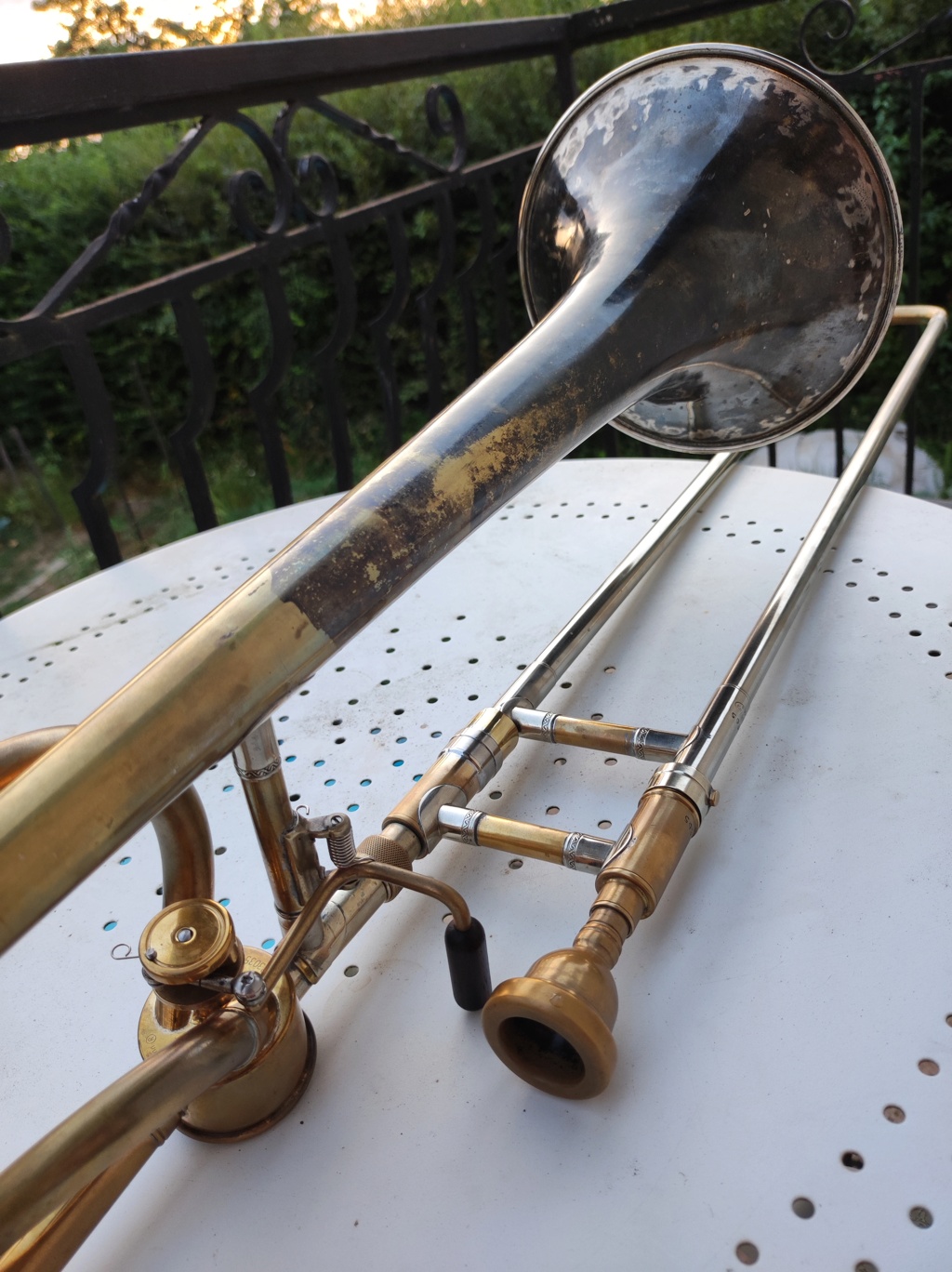ScottZigler wrote: ↑Thu Aug 22, 2024 2:10 pm
Sesquitone, I've always wondered what your thoughts are about Bollinger's Bb/F/flat G/flat Eb tuning. I have a Shires Bollinger and use my flat G a lot more than F; probably about 3:1.
Since this thread is about a
single-valve tenor trombone tuned Bb/G(natural), drifting off onto inline dual-valves is a bit off topic. But, to the extent that there are a number of different tunings used with the "
second" (i.e. finger-trigger operated) valve, it is, perhaps, relevant to look at other single-valve tunings such a G flat and G "half-flat" (like the Bollinger tuning). The inquiry is about the (dual-valve) Bollinger tuning, so I'll try to answer that. Some of that may carry over to single-valve tunings.
In the ETSP Charts below, black dots represent slide-alone (SA) equitempered tones, open circles refer to thumb-trigger-operated valves, "stars" are for finger-trigger-operated valves, and "cartwheels" (stars within circles) are for the double combination. Heavy curves sloping down to the right show all tones sitting on an individual (SA or attachment) harmonic. Vertical lines are for SA fundamental positions.
A good “diagnostic” on the ETSP Charts is to trace whole-tone shifts
between adjacent (SA or attachment) harmonics (dashed lines in the charts below). The general rule (for facile slide manipulation) is: the steeper (but less zig-zaggy) the better. In other words, more closely approximating the (steep but smooth) slide-alone dashed-line patterns in the facile upper register.
You can judge for yourself which tuning combinations do better in this respect. Some do better than others in different registers; but throughout the (potentially awkward) bass clef, you can see (at a glance) the advantages of the G-natural attachment! In particular, the patterns within the bass clef for the Bb/G-Eb-Db tuning—where the Eb valve (stars) plays no part—closely mimic the slide-alone patterns an octave higher. This is also the tremendous advantage of the single-trigger Bb/G tenor! [And Eb/C alto and C/A tenor. The latter is a great “lead” instrument, paralleling the bright C trumpet, often used in symphony orchestras.]
As pointed out by EZ, you can also see how, on the popular dual-valve tuning, Bb/F-Gb-D, the F (circles) and Gb (stars) harmonics are "too close together". [A
dependent-valve combination, tuned Bb/F#/D, that fills the octave gap between first and second SA harmonics with a Bb-augmented triad, is "better" in this respect—and has the advantages of the Gb valve in the awkward region within the bass clef.]
The single "disadvantage" of the Bb/F-G-"Eb" tuning is that the low B1 is a "long way out" (although, "
Still there", as emphasised by Denson Paul Pollard). The Bollinger tuning is a compromise between Bb/F-G-"Eb" and Bb/F-Gb-D, by "widening" the space between the two attachment's harmonics in the latter case, while reducing the stretch (a little) to the B1 (and its pedal) relative to its position with Bb/F-G-"Eb" tuning. In my "opinion", sacrificing the closed-slide G3, D3, and G2 is too big a price to pay compared with any other "advantages" over either Bb/F-G-"Eb" or Bb/F-Gb-D.
Rather than widening the gap between the F and Gb harmonics by
raising the latter by half a semitone, my preferred tuning widens the gap between G (natural) and F of the Bb/F-G-"Eb" by
lowering the F to (a slightly sharp) E (natural), giving a perfectly in-tune D1 with the slide closed (as with the Bb/F-Gb-D tuning)—and this brings the B1 back to where it is with that tuning (half-way between SA 5th and 6th positions). And, by
switching the thumb and finger trigger linkages, the Bb/G-E-D tuning is now
compatible with a single-trigger Bb/G combination—which brings us back to the topic at hand! Finally, Bb/G-Eb-Db is seen to be a viable tuning—the B1 is even closer (slightly beyond SA 4th position). This is a transposition (up a P4) of the popular contrabass tuning F/D-Bb-Ab.
.
You do not have the required permissions to view the files attached to this post.




